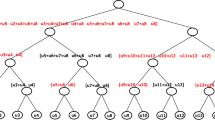Abstract
This paper presents an implementation of hardware/software co-design for high efficiency advanced-audio-coding (HE-AAC) audio decoder. The decoder system is partitioned into software and hardware part throughout the computation analysis. In our design strategy, the bitstream parser and lower complexity part are performed by software solution, and the higher complexity part is computed by hardware solution. As in the dedicated hardware, four units are developed to cope with IMDCT, analysis quadrature mirror filterbank (AQMF), HF generator and envelope adjuster and synthesis quadrature mirror filterbank (SQMF). To support the various types of transformation-based functions in HE-AAC decoding, we manipulate it based on the decomposition of common radix-2 FFT method. The hardware part is designed as an intellectual property (IP) by TSMC 90 nm library. As a cost-effective design, it consumes about 150 K gates and executes at a very low operation frequency with 1.75 MHz. The power consumption is only 7.69 mW with some low power design considerations. Moreover we construct the overall system including the wrapper design and embedded platform as a system on a programmable chip (SOPC) platform. With this design approach, over 91.26 % processor-based loading can be saved and substituted by this hardware IP.
















Similar content being viewed by others
References
Meltzer S., & Moser G. (2006). MPEG-4 HE-AAC v2 – audio coding for today's digital media world. EBU technical review (01/2006).
Huang J., Du G., Zhang D., Song Y., Geng L., Gao M. (2009). VLSI design of resource shared complex-QMF bank for HE-AAC decoder, ASIC, 2009. ASICON '09. IEEE 8th International Conference on, pp. 796–799.
Huang, S. W., Tsai, T. H., & Chen, L. G. (2005). Fast decomposition of filterbanks for the state-of-the-art audio coding. IEEE Signal Processing Letters, 12(10), 693–696.
Chivukula, R. K., Reznik, Y. A., Devarajan, V., & Jayendra-Lakshman, M. (2012). Fast algorithms for low-delay SBR filterbanks in MPEG-4 AAC-ELD. IEEE Transactions on Audio, Speech and Language Processing, 20(3), 1022–1031.
Li A. K., Lei S. F., Tsai W. K., Lai S. C. (2014). Fast algorithm and common structure design of recursive analysis and synthesis quadrature mirror filterbanks for digital radio mondiale, Circuits and Systems (ISCAS), 2014 I.E. International Symposium on, pp. 1199–1202.
Wang, G., Zhang, H., Lu, M., Zhang, C., Jiang, T., & Guo, G. (2014). Low-cost low-power ASIC solution for both DAB+ and DAB audio decoding. IEEE Transactions on VLSI Systems, 22(4), 913–921.
Yan M., Hu G., Jia W. (2009). Design and implementation of MPEG-4 AAC decoder on ARM Embedded System for CMMB receiver, Management and Service Science, 2009. MASS '09. International Conference on, pp. 1–3.
Shimada O., Nomura T., Sugiyama A., Serizawa M. (2006). DSP implementation of the 3GPP enhanced AACPlus decoder, Consumer Electronics, 2006. ICCE '06. 2006 Digest of Technical Papers. International Conference on, pp. 277–278.
ARM website, http://www.arm.com/zh/products/processors/classic/arm9/arm926.php.
FAAD website, http://www.audiocoding.com/.
Tsai, T. H., & Liu, C. N. (2007). A configurable common filterbank processor for multi-standard audio decoder. IEICE Transactions on Fundamentals of Electronics, Communications and Computer Sciences, E90-A(9), 1913–1923.
ISO/IEC. (2005) Coding of audio-visual objects - Part3: Audio, ISO/IEC Int. Std.14496–3.
Jhung, Y., & Park, S. (1997). Architecture of dual mode audio filter for AC-3 and MPEG. IEEE Transactions on Consumer Electronics, 43(3), 575–585.
Lee, S. W. (2001). Improved algorithm for efficient computation of the forward and backward MDCT in MPEG audio coder. IEEE Transactions on Circuits and Systems II: Express Briefs, 48(10), 990–994.
Cheng, M. H., & Hsu, Y. H. (2003). Fast IMDCT and MDCT algorithms - a matrix approach. IEEE Transactions on Signal Processing, 51(1), 221–229. doi:10.1109/TSP.2002.806566.
Li, H., Li, P., Wang, Y., Tang, Q., & Gao, L. (2009). A New decomposition algorithm of DCT-IV/DST-IV for realizing fast IMDCT computation. IEEE Signal Processing Letters, 16(9), 735–738.
Lai, S. C., Lei, S. F., & Luo, C. H. (2009). Common architecture Design of novel recursive MDCT and IMDCT algorithms for application to AAC, AAC in DRM, and MP3 codecs. IEEE Transactions on Circuits and Systems II: Express Briefs, 56(10), 793–797.
Lei, S. F., Lai, S. C., Cheng, P. Y., & Luo, C. H. (2010). Low complexity and fast computation for recursive MDCT and IMDCT algorithms. IEEE Transactions on Circuits and Systems II: Express Briefs, 57(7), 571–575.
Tsai, T. H., & Liu, C. N. (2009). Low-power system design for MPEG-2/4 AAC audio decoder using pure ASIC approach. IEEE Transactions on Circuits and Systems I: Regular Papers, 56(1), 144–155.
“Derivation of fast DCT-4 algorithm based on DFT,” website, http://www.appletonaudio.com/blog/2013/derivation-of-fast-dct-4-algorithm-based-on-dft/.
O'Leary, J., Leeser, M., Hickey, J., & Aagaard, M. (1995). Non-restoring integer square root: a case study in design by principled optimization. In Theorem provers in circuit design (pp. 52–71). New York: Springer Berlin Heidelberg.
Author information
Authors and Affiliations
Corresponding author
Rights and permissions
About this article
Cite this article
Tsai, TH., Chen, DM. A Hardware/Software Co-design of High Efficiency AAC Audio Decoder. J Sign Process Syst 88, 345–356 (2017). https://doi.org/10.1007/s11265-016-1165-y
Received:
Revised:
Accepted:
Published:
Issue Date:
DOI: https://doi.org/10.1007/s11265-016-1165-y




